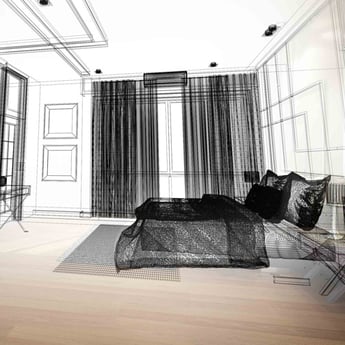Modern methods of construction

The increasing pressure to identify tangible solutions to the housing crisis is spurring greater innovation in the building industry and particularly in the field of modular construction.
Of course, the concept of ‘modular’ is not new. It has been used in one form or another throughout history, albeit perhaps most notably after the Second World War as a means of quickly replacing the significant number of homes that were destroyed in the Blitz.
But interest in the use of prefab, at least on any significant scale, waned over subsequent years, not least because of concerns about quality and longevity. Where it continued to be used was in high-end, small scale projects, often comprising single dwellings or small groups of homes.
For some, concerns about the use of modular construction remain. But there is no doubt that perceptions are changing and they are changing because the common images of prefab, built on the crumbling legacy of British post-war social housing, have been ousted by a new generation modular homes that are stylish, affordable, energy efficient and built to last.
A variety of new approaches are being adopted in the construction sector, including wall panels complete with windows, insulation and external cladding; experimentation with 3D printing; and volumetric construction where entire modules, which could be as expansive as several rooms, are supplied on site ready-made.
Modern methods of construction are taking building processes away from the development site. Consequently, they are salvaging construction from the delaying impacts of poor weather. They also requires less in the way of materials, can reduce waste and can drastically cut construction times and costs. In times of financial restraint, environmental awareness and significant great need (particularly affordable homes), the opportunities presented by modern construction methods are fuelling excitement over their potential to help address the housing crisis. Some have gone so far as to say that the use of modern construction methods will be critical if we are to deliver the 300,000 homes a year that the Government has indicated are required.
Unsurprisingly, therefore, this is an initiative that is being firmly backed by the Government. In 2016, the then Homes & Communities Agency launched the Home Building Fund, a £3 billion fund to increase the number of new homes being built in England. Around £1 billion has already been awarded to schemes employing modern methods of construction. However, the private sector is, it seems, engaging with increasing interest also. Legal and General, for example, have made significant investment into modern methods of construction and now operate the world’s largest modular homes factory in Selby, near Leeds. They are fusing precision-engineering, environmental awareness and modern materials to produce up to 3,000 homes per year. Closer to home, Urban Splash has launched modular brand ‘House’, and is delivering modular homes at Icknield Port Loop in Birmingham.
As a town planner, I see considerable potential in modular construction. One of the greatest challenges facing many local authorities is the speed at which new homes are delivered. And many don’t help themselves by adopting strategies that are overly reliant on a small number of very large sites that are hugely complex and time consuming to deliver. Whilst the use of modern methods of construction won’t do anything to speed up the planning process itself, or the time it takes to get from obtaining a planning permission to building the first home on a site, it could, on the face of it, speed up drastically the rate at which homes are built once a development commences. This could make a dramatic difference to local authority housing trajectories and, in turn, strategic policy-making.
That said, we must continually strive to deliver better ‘places’ and will need to guard against any threat of quality playing second fiddle to numbers and speed of delivery. If modular can be used to deliver more housing and high quality places that endure, and can also help us deliver them faster, then we should embrace the concept and work with the designers, funders, fabricators and developers to ensure that we have the capacity to grow the sector at a pace.
